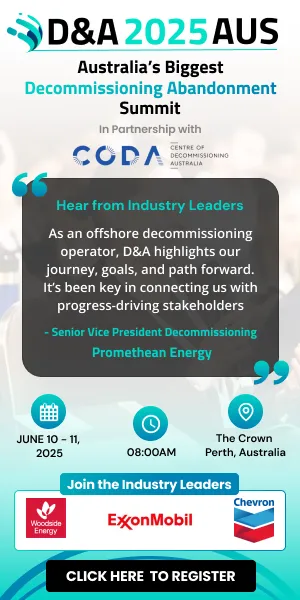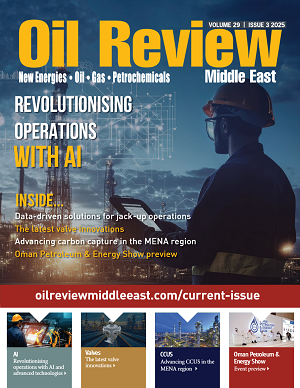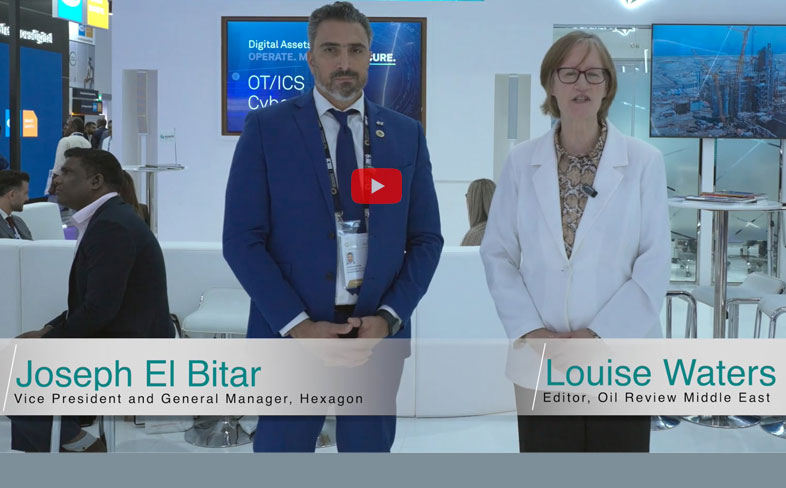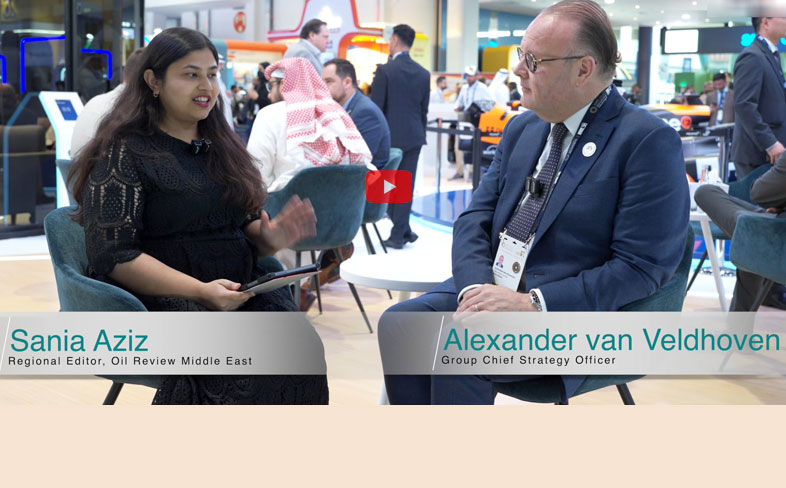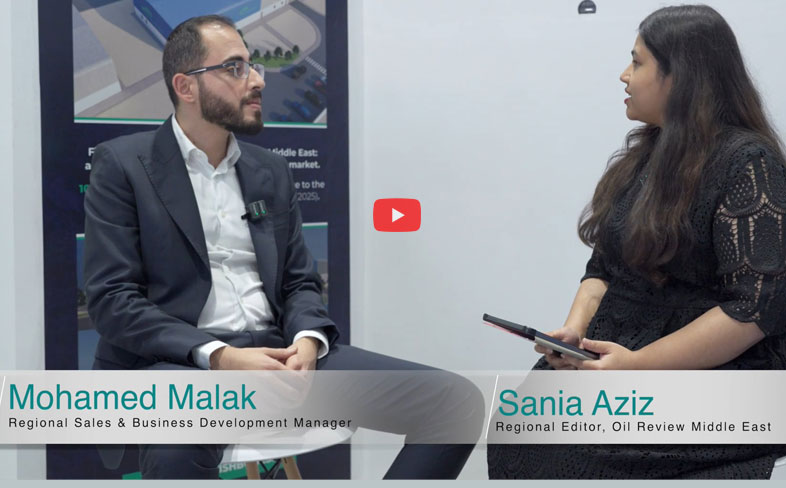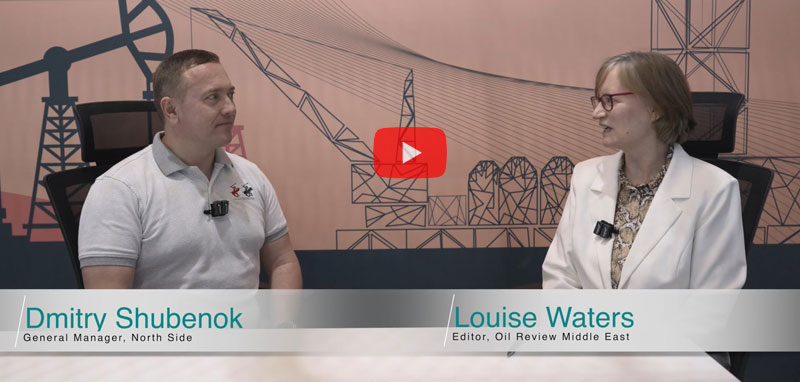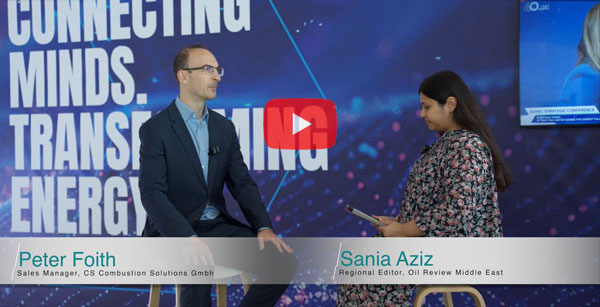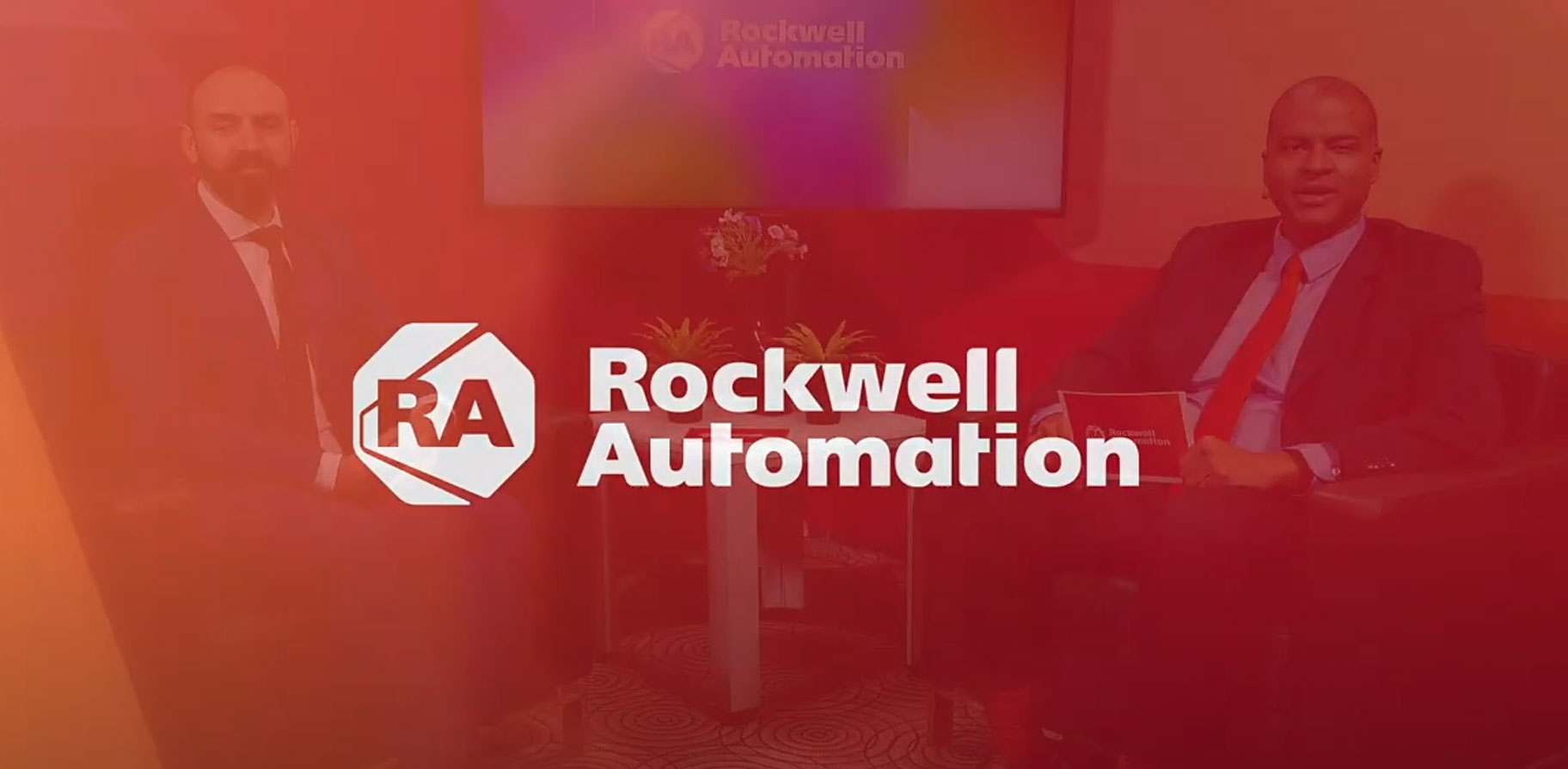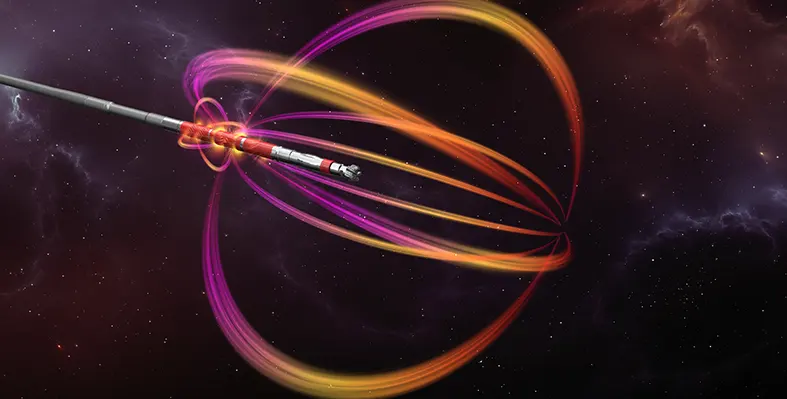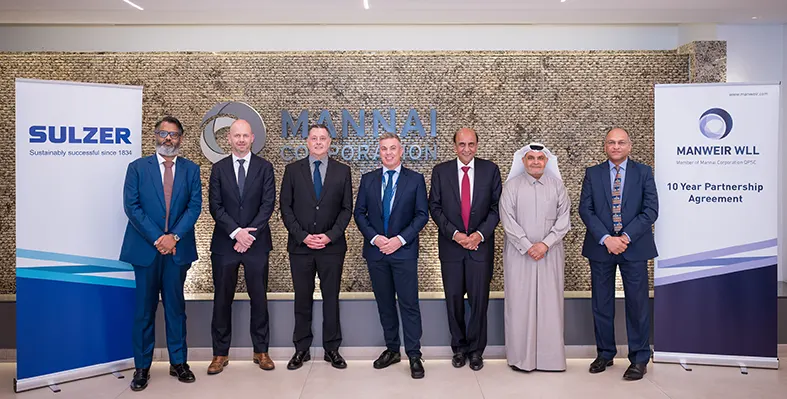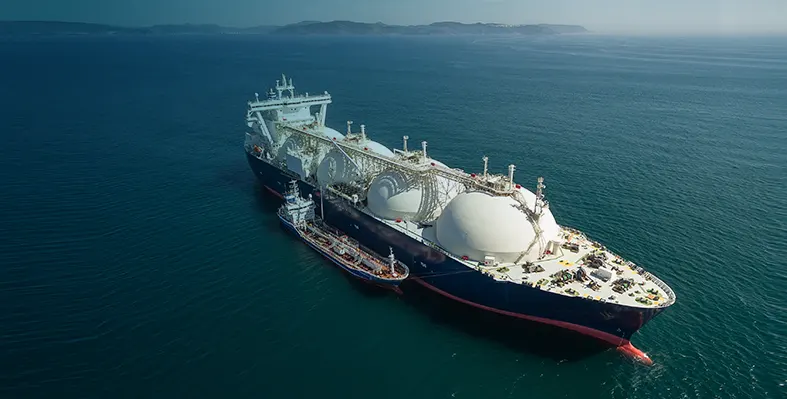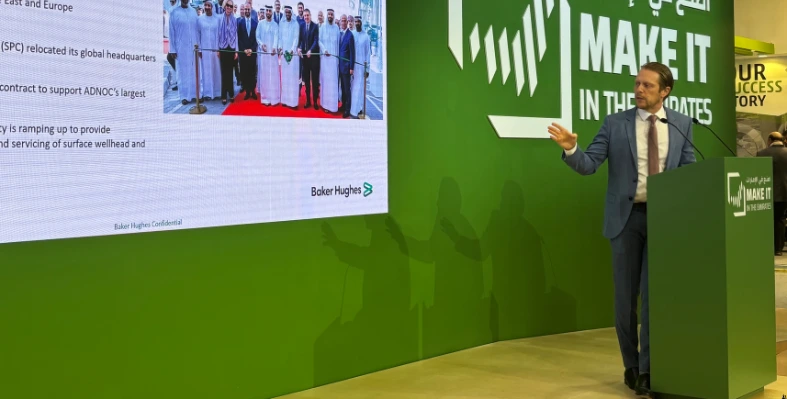In The Spotlight
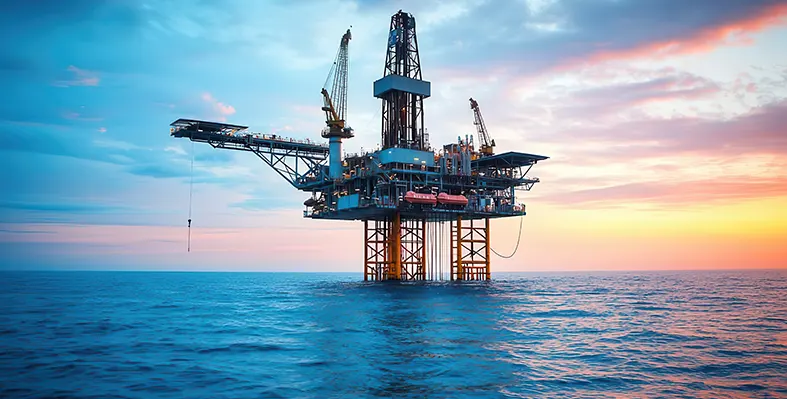
The scope involves detailed engineering design for ‘Package 5’ of ADNOC Offshore’s Lower Zakum Long-Term Development Phase 1 (LTDP1) project.
Wood scopes Lower Zakum engineering design contract
Global consulting and engineering company Wood has been awarded an engineering design contract for ADNOC Offshore’s Lower Zakum development
The scope involves detailed engineering design for ‘Package 5’ of ADNOC Offshore’s Lower Zakum Long-Term Development Phase 1 (LTDP1) project, on the UAE’s Das Island. The contract was awarded by Target Engineering, the EPC contractor.
Located around 65 km northwest of Abu Dhabi, Lower Zakum Field is one of ADNOC’s most significant offshore assets as it seeks to meet its production target of 5mn bpd by 2027.
The LTDP1 project aims to expand sustainable production capacity to 450,000 up to 2035. ’Package 5’ facilities will include three new oil processing trains, including separation, a desalter, dehydration, oil stabilisation system, a new seawater offshore platform, and other related utility facilities. Wood will develop crude oil stabilisation mechanisms at Das Island, which will support the sustainable production of oil at the site until 2035.
Gerry Traynor, president of Eastern Hemisphere Projects at Wood, said, “The Lower Zakum long-term development is a major project in the UAE, which we are proud to work with Target Engineering on.
“Wood's experience in complex engineering design across the Middle East will support Target Engineering and ADNOC Offshore to deliver the goal of maximum energy with minimum emissions.”
He added that more than 200 Wood engineers from across the UAE, India and the UK will work on the project for the next two years. Wood currently employs over 4,000 people across the Middle East, having increased its headcount by 500 in 2024.
Wood has previously completed a successful front-end engineering and design (FEED) scope for Lower Zakum.
ADNOC awarded US$7.5bn of EPC contracts for Packages 2, 4 and 5 of the LTDP1 Lower Zakum project earlier this year.
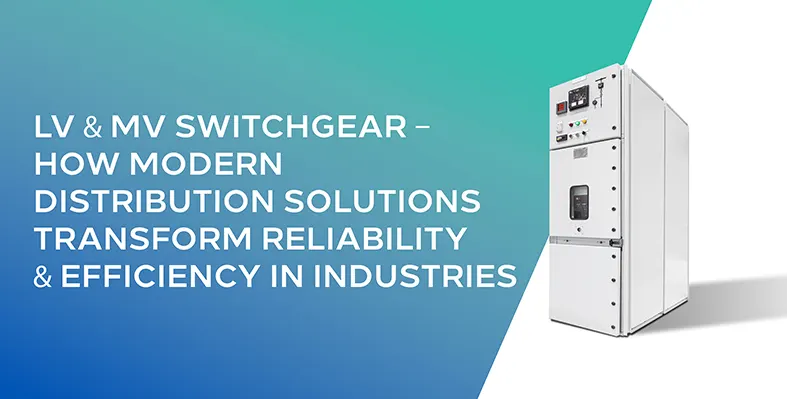
Utilities and industrial operators need to transition to next-generation distribution systems. (Image source: Bawan Engineering Group)
Transforming reliability and efficiency with smart switchgear solutions
To meet today’s demands, utilities and industrial operators must transition to next-generation distribution systems, says Wael Gad, CEO and board member of Bawan Engineering Group
Frequent power outages, unexpected equipment failures, and rising maintenance costs are not just technical hiccups; they are business risks. As the CEO of a company that works extensively with various industries, I have seen these disruptions causing ripples across operations, delaying timelines, inflating budgets, and resulting in financial losses for my customers.
The pace at which energy demand is growing, combined with the increasing unpredictability of energy consumption, makes it clear that legacy systems are holding us back. It is time we treat power distribution as a strategic investment, not just an operational necessity.
Background
With the rise in manufacturing and the increasing use of machines, we have witnessed unprecedented transformations in various industries. As demand for industrial products has increased, factories have not kept pace in transforming their operations and equipment. As a result, industries have become inefficient and prone to breakdowns or failures.
A range of technologies and equipment ensures consistent operational readiness in critical industries, such as oil and gas (O&G), data centres, and other essential manufacturing applications. As a T&D expert, my focus is on power distribution infrastructure and its crucial role in ensuring the reliability of your manufacturing site. At the distribution level, switchgear is one of the most critical components, guaranteeing the safety of the entire network. However, ageing switchgear systems, limited automation, and reactive maintenance strategies have led to operational inefficiencies and frequent service disruptions in industries.
These issues result in prolonged power outages, decreased system reliability, and increased operational and maintenance (O&M) costs. Furthermore, outdated or insufficient electrical switchgear is a primary contributor to these inefficiencies, as it is essential for fault isolation, protection, and control functions. As a result, grid stability is compromised, leading to lower customer satisfaction and reduced system performance.
Why traditional switchgear no longer meets the needs of modern power systems
Now that we have outlined the problem and its impact, it is important to take a step back and ask: why is this happening in the first place? The answer lies in the limitations of traditional low-voltage (LV) and medium-voltage (MV) switchgear. Let’s take a closer look at some of the most critical shortcomings.
Lack of real-time visibility
Traditional switchgear gives you a binary view: on or off, fault or no fault. In dynamic industrial and manufacturing operations, these indicators are insufficient to assess the health of distribution assets.
Unpredictable maintenance and costly downtime
In my experience, unplanned outages can disrupt an entire production cycle or compromise service-level agreements (SLAs), resulting in high costs.
Slow response times and manual operations
In the event of faults or load imbalances, traditional systems primarily rely on field inspections to identify and address issues. The field team is dispatched without a definite fault location, delays recovery, and exposes personnel to hazards. Even a minute lost in response time can lead to increased disturbances in the system and negatively impact customer relationships.
Difficulties integrating modern energy systems
As electrical grids move toward decentralisation, integrating distributed energy resources, such as solar, wind, and battery storage, into the grid has become an imperative general practice. With the increasing number of installations having unknown risks, the traditional switchgear may not be able to handle this level of complexity.
Traditional switchgear solutions lack the ability to consistently communicate. Therefore, it becomes difficult for effective energy management systems and smart grid smarty pants to be very effective.
Turning challenges into opportunities
To meet today’s demands, whether it’s reducing downtime, improving safety, supporting the integration of renewable energy, or enabling advanced grid automation, utilities and industrial operators must transition to next-generation low- and medium-voltage switchgear. Smart switchgear turns traditional pain points into performance gains. Here’s how:
Maximised system reliability and lesser downtime
Smart switchgear solutions significantly enhance system uptime by identifying and mitigating faults before they impact operations. Predictive analytics and continuous monitoring enable preemptive maintenance, thereby reducing the need for emergency responses and minimising business disruptions.
With real-time fault location and the ability to switch remotely, engineers can achieve faster resolution times. In any industrial setting, where time is money, UTEC's solutions offer productivity and service availability by automating recovery while minimising manhours.
Extended lifespan of equipment
From a capital allocation perspective, extending the lifespan of electrical infrastructure is a game-changer. Intelligent switchgear continuously self-monitors, tracking insulation quality, temperature, and load conditions.
The result? We can replace or maintain components before they fail. Adopting a condition-based maintenance approach has effectively moved from reactive to proactive asset management. In financial terms, that translates to decades of additional service life, lower replacement costs, and a better return on infrastructure investment.
Lower operational and maintenance costs (OPEX)
UTEC's switchgear technology substantially lowers operational expenditure as it features intelligent asset management. Remote diagnostics and real-time operational status have diminished the requirement for manual site visits and emergency maintenance.
UTEC switchgear features predictive analytics that reduce energy losses, thereby optimising resource utilisation and facilitating efficient power system operation, ultimately lowering OPEX
Improved energy efficiency
Maintaining optimal energy use with UTEC's switchgear means intelligent load balancing and monitoring energy flow residuals across the network. This saves technical losses, contributing to improved power factors that support sustainability goals and save money.
Combining UTEC's switchgear capabilities with EMS and SCADA ensures that power is always distributed effectively and adaptively during periods of peak demand or when loads change.
Intelligent distribution: a strategic advantage
We have seen how smart switchgear can transform outdated infrastructure into a strategic asset, resulting in enhanced performance, improved safety, and more informed decision-making.
In today’s fast-paced world, your infrastructure strategy is your business strategy. Upgrading to intelligent distribution solutions is not just about keeping the lights on; it is about unlocking efficiency, resilience, and growth.
Wael Gad is the CEO and board member of Bawan Engineering Group, a subsidiary of Bawan Holding, a public listed KSA company. Bawan Engineering Group consists of several companies operating in the manufacturing and services of Electrical & Digitisation equipment (Transformers, Substations, Switchgears, e-Houses, Battery Energy Storage Systems (BESS) and Data Centres). Bawan Engineering Group sells its products in more than 20 countries across the world under the brand UTEC.
Wael has more than 30 years of diversified experience across Europe, Middle East and Africa leading several multinationals and regional organisations. He serves as a board member of several companies in Saudi and Egypt and has also served as an advisory board director and as a business development and governance advisor with several organisations. Previously Wael was the CEO of Philips Lighting in Saudi, the general manager of Microsoft MMD in Saudi & Yemen and also held several C-level assignments for Electrolux across EMEA.

Retina at-bit imaging provides precise measurements at the critical point of first contact between the drill bit and the formation. (Image source: SLB)
SLB launches Retina at-bit imaging
SLB has launched Retina at-bit imaging, which converts measurements taken at the drill bit into detailed, high quality borehole images
Successfully tested in the Middle East, Retina at-bit imaging provides precise measurements at the critical point of first contact between the drill bit and the formation, providing unsurpassed image clarity in large hole sizes as drilling commences and the borehole diameter reduces progressively toward the reservoir section, thereby enabling identification of formation characteristics to optimise drilling efficiency, formation evaluation and safety.
It works by using a PDC drill bit tailored with the latest design, architecture and cutter technologies to accommodate sensors for measuring forces at the bit face. It captures formation details to visualise and characterise layers, bedding dips, thin beds, fractures, and textural variations without interference from any type of drilling fluid. The raw data is processed to create a high-resolution borehole image for formation characterisation and rock properties qualification. High-resolution images are important for geological characterisation from the outset of drilling, revealing potential well-related expenditures such as mud-loss zones, hard drilling intervals and stuck-pipe events — which can add days to complete the well, incur non-productive time, and increase safety risks.
Retina addresses the limitations of traditional imagers, which are often restricted by operational factors like drilling fluid type and wellbore damage, and often not usable in the reservoir access intervals due to borehole size limitations.
Field test data from land operations in the Middle East have demonstrated Retina's versatility and effectiveness. In one field test in the Middle East, Retina revealed the presence of fractures and vugs (small cavities or pores within the rock) in carbonate formations, providing critical information for predicting and preventing mud losses. During another field test, the tool also provided high-resolution images of stylolites, which act as pressure barriers, allowing for a better understanding of productive zones.
“Retina provides an unparalleled view of the formation and its characteristics downhole, enabling better-informed decisions from the start,” said Cecilia Prieto, president, Well Construction, SLB.
“This leading-edge technology marks a significant advancement in borehole imaging, providing drillers with critical insight in situations where it was previously impossible. With imaging at the bit, before the formation is affected by drilling fluids, the exceptional resolution unlocks new opportunities around drilling, fluid management, and completions, leading to significant risk reduction and production optimisation.”
Dammam, Saudi Arabia
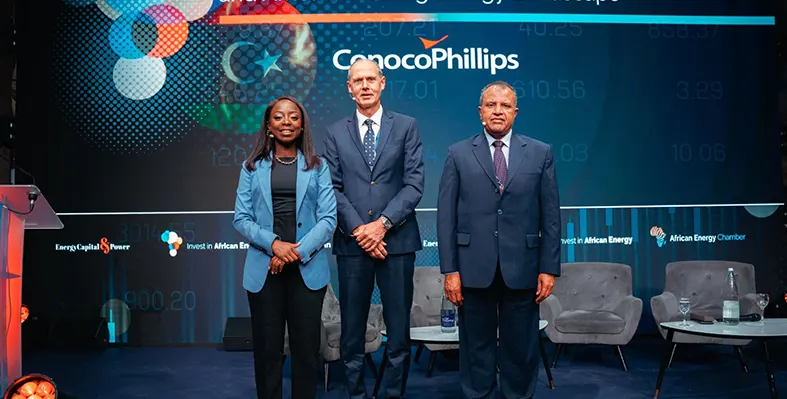
Libya's latest bid round has attracted international investor interest. (Image source: Energy Capital & Power)
Libya bid round attracts international investor interest
Libya’s latest upstream licensing round has already attracted more than 40 bids, according to Abdolkabir Alfakhry, Advisor to Libya’s Minister of Oil and Gas, signalling growing international interest in its largely untapped hydrocarbon potential
The bid round, launched in March, offers 22 blocks for exploration and development (11 Offshore and 11 Onshore) including areas with undeveloped discoveries estimated to contain a minimum of 2.0 Bboe in hydrocarbon resources.
The Minister, who was addressing a session sponsored by ConocoPhillips at the Invest in African Energy Forum in Paris, noted that results of the bid round are expected around November. “This will open a new environment for international companies to work in Libya.”
Libya’s assets are underexplored, particularly offshore, Alfakhry said, pointing to the country’s strategic location on the Mediterranean and its proximity to European markets as key competitive advantages.
“The bid round signals Libya’s integration into the global energy market,” he said.
Steiner Våge, president for Europe, the Middle East and Africa at ConocoPhillips, confirmed the U.S. major’s intention to deepen its engagement in Libya and across the African continent.
“Libya is a place where we can work – over the last few years, we’ve significantly increased production at the Waha concession,” said Vaage. “We want to see Libya prosper. We’d also like to transfer our knowledge, and we want to work with partners that have similar objectives – that is the starting point.”
At Libya Energy & Economic Summit 2025 earlier this year, Bashir Garea, technical advisor to the chairman of the NOC, highlighted the country’s immense oil and gas potential.
“We have 48 billion barrels of discovered but unexploited oil, with total potential estimated at 90 billion barrels, especially offshore,” he said, adding that Libya also has 122 trillion cubic feet of gas yet to be developed. “To unlock this potential, we need more investors and new technology, particularly for brownfield revitalisation.”
Oil majors including Eni Repsol, bp and OMV have recommenced exploration in Libya in recent months following a 10-year hiatus. However the recent eruption of violent clashes in Tripoli following the assassination of a powerful militia leader, shows that the current security situation is far from stable.

The current uncertainty around the tariff landscape is reshaping the energy and natural resources sectors.
Tariff scenarios for the future energy landscape
A new report from Wood Mackenzie highlights the far-reaching implications of ongoing trade tensions for the energy and natural resources sectors
"Trading cases: Tariff scenarios for taxing times", presents three distinct outlooks for the global energy and natural resources industries – Trade Truce (the most optimistic), Trade Tensions (the most likely) and Trade War (the worst outcome) – each painting a dramatically different picture for global GDP, industrial production and the supply, demand, and price of oil, gas/LNG, renewable power and metals through 2030.
“The current uncertainty around the tariff landscape is reshaping the energy and natural resources sectors,” said Gavin Thompson, vice chairman, of energy at Wood Mackenzie. "Lower economic growth will curb energy demand, prices and investment, while higher import prices will raise costs in sectors from battery storage to LNG. Energy leaders must now become masters of scenario planning, preparing for everything from continued growth to significant market disruptions.”
The report highlights the key role of trade policies in shaping the future oil markets, with oil demand in 2030 varying by up to 6.9mn bpd between scenarios. In the Trade Truce scenario, oil demand reaches 108mn bpd by 2030, with Brent averaging US$74/bbl, whereas the Trade War scenario sees demand falling in 2026 and Brent plunging to US$50/bbl.
“Trade policies are emerging as a pivotal force in shaping the future of oil markets," said Alan Gelder, SVP refining, chemicals and oil markets. “Falling oil demand results in the global composite gross refining margin collapsing to break-even levels, creating pressure for the rationalisation of weaker sites, particularly in Europe.”
As for the natural gas and LNG outlook, the Trade War scenario could exacerbate the anticipated global LNG oversupply. In the Trade Truce scenario, LNG prices fall from US$11.2/mmbtu in 2024 to US$7.2/mmbtu by 2030 as the market absorbs a wave of new LNG supply growth. In the Trade Tension scenario, the impact might be limited. However, in the Trade War scenario, prices fall further as Chinese LNG demand falls sharply, while tariffs force buyers to redirect US LNG cargoes.
“Although tariffs pose downside risks to global LNG supply, it is possible there will be more investments in US LNG," said Massimo Di Odoardo, vice president of gas and LNG research at Wood Mackenzie. “With President Trump pointing countries towards buying more US energy, including LNG, to reduce their bilateral trade surpluses, more investments in US LNG plants are likely, also contributing to higher gas demand in North America."
The report concludes that while recent trade agreements have encouraged optimism, it is advisable to plan for divergent trade outcomes.
Thompson said, "Despite recent trade agreements, the global trade landscape remains fraught with uncertainty. In a scenario of escalating tariffs, we anticipate significant impacts on manufacturing and industrial production, which could slow the momentum of low-carbon energy investments. Energy companies must be prepared to adapt swiftly to mitigate risks and navigate supply chain disruptions. With major economies potentially facing prolonged recovery periods, agility in strategy and operations will be crucial for the energy sector in this unpredictable trade environment."
Read the entire report here: https://www.woodmac.com/horizons/tariff-scenarios-taxing-times/
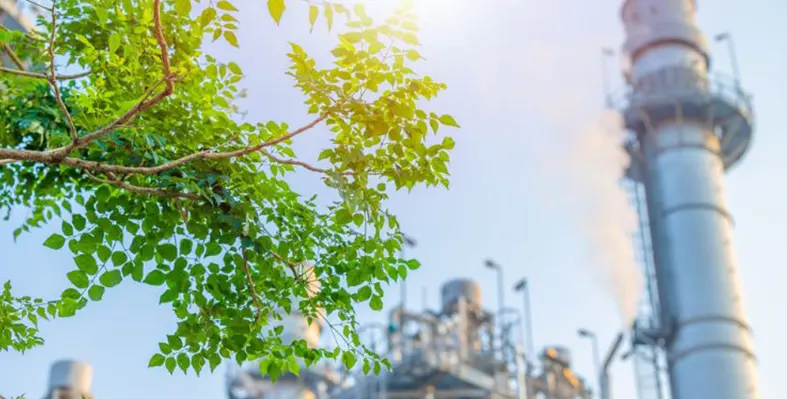
The petrochemical industry is increasingly turning its attention to chemical recycling. (Image source: Synergy)
Circular chemistry: chemical recycling and the petrochemical industry
As environmental concerns and regulatory pressures gain precedence, the petrochemical industry is increasingly turning its attention to chemical recycling
Often positioned as a potential game-changer, this technology seeks to offer a more sustainable path by converting plastic waste back into its original chemical components, enabling the production of new materials with properties comparable to those made from virgin feedstocks. Its attractiveness lies in addressing the twin evils – the plastic waste crisis and the need for higher-quality recycled materials.
How does chemical recycling work?
Chemical recycling, also referred to as advanced recycling, differs from mechanical recycling in both process and potential. Rather than grinding and melting plastics, it involves breaking down polymers into monomers or other base chemicals through processes such as pyrolysis, gasification, or depolymerisation. This allows for the creation of new plastics suitable for applications that require high purity, including food-grade packaging, where mechanically recycled plastics often fall short.
Several companies around the world have begun to scale up their chemical recycling initiatives.
• ExxonMobil, for example, has announced plans to invest US$200mn to expand its chemical recycling capabilities at its Baytown and Beaumont complexes in Texas. With its proprietary Exxtend technology, the company aims to process up to half a million tons of plastic waste per year by 2027.
• In Europe, Eastman Chemical is building a US$1bn molecular recycling facility in France. Once operational, it is expected to recycle up to 160,000 tons of plastic waste annually using polyester renewal technology.
• In India, Reliance Industries has become a pioneer in this space, producing circular polymers at its Jamnagar refinery, which has received ISCC-Plus certification to ensure sustainability and traceability.
However, the economic challenges associated with chemical recycling are substantial. These technologies are energy-intensive, resulting in higher operational costs compared to traditional recycling or even the production of virgin plastics. In some cases, chemically recycled polyethylene terephthalate (PET) can cost two to three times more than its virgin counterpart, limiting its competitiveness. Additionally, the process often requires clean and sorted plastic waste as feedstock, which is difficult to obtain in many regions due to inadequate waste segregation and contamination. This issue not only affects cost but also scalability.
Advantages of chemical recycling
From an environmental standpoint, chemical recycling does offer certain advantages. Studies indicate that pyrolysis — a commonly used method in chemical recycling — can emit up to 50% less CO₂ than the incineration of mixed plastic waste. The process also has the potential to eliminate hazardous substances embedded in plastics, such as legacy chemicals and substances of very high concern (SVHC), resulting in cleaner end-products. Nevertheless, these benefits must be weighed against the significant energy inputs required for these processes. Without low-carbon energy sources or efficiency improvements, the net environmental gains may be limited.
Looking ahead, the development of chemical recycling will depend on a combination of technological, regulatory, and economic factors. Enhancing waste collection and sorting infrastructure will be crucial for improving feedstock quality. Policy frameworks that clearly define recycled content and support traceability will help create market confidence. Meanwhile, collaboration between governments, research institutions, and industry stakeholders could accelerate innovation and reduce costs over time.
While chemical recycling is unlikely to single-handedly resolve the petrochemical sector’s sustainability challenges, it may play a valuable role within a broader strategy for circularity. When complemented by upstream design changes, responsible consumption, mechanical recycling, and waste minimization efforts, it has the potential to contribute meaningfully to the sector's transition.
Whether it ultimately transforms the petrochemical industry or becomes a niche complement to existing methods will depend on how these challenges are addressed in the years to come.
This article is authored by Synergy Consulting IFA.

Retina at-bit imaging provides precise measurements at the critical point of first contact between the drill bit and the formation. (Image source: SLB)
SLB launches Retina at-bit imaging
SLB has launched Retina at-bit imaging, which converts measurements taken at the drill bit into detailed, high quality borehole images
Successfully tested in the Middle East, Retina at-bit imaging provides precise measurements at the critical point of first contact between the drill bit and the formation, providing unsurpassed image clarity in large hole sizes as drilling commences and the borehole diameter reduces progressively toward the reservoir section, thereby enabling identification of formation characteristics to optimise drilling efficiency, formation evaluation and safety.
It works by using a PDC drill bit tailored with the latest design, architecture and cutter technologies to accommodate sensors for measuring forces at the bit face. It captures formation details to visualise and characterise layers, bedding dips, thin beds, fractures, and textural variations without interference from any type of drilling fluid. The raw data is processed to create a high-resolution borehole image for formation characterisation and rock properties qualification. High-resolution images are important for geological characterisation from the outset of drilling, revealing potential well-related expenditures such as mud-loss zones, hard drilling intervals and stuck-pipe events — which can add days to complete the well, incur non-productive time, and increase safety risks.
Retina addresses the limitations of traditional imagers, which are often restricted by operational factors like drilling fluid type and wellbore damage, and often not usable in the reservoir access intervals due to borehole size limitations.
Field test data from land operations in the Middle East have demonstrated Retina's versatility and effectiveness. In one field test in the Middle East, Retina revealed the presence of fractures and vugs (small cavities or pores within the rock) in carbonate formations, providing critical information for predicting and preventing mud losses. During another field test, the tool also provided high-resolution images of stylolites, which act as pressure barriers, allowing for a better understanding of productive zones.
“Retina provides an unparalleled view of the formation and its characteristics downhole, enabling better-informed decisions from the start,” said Cecilia Prieto, president, Well Construction, SLB.
“This leading-edge technology marks a significant advancement in borehole imaging, providing drillers with critical insight in situations where it was previously impossible. With imaging at the bit, before the formation is affected by drilling fluids, the exceptional resolution unlocks new opportunities around drilling, fluid management, and completions, leading to significant risk reduction and production optimisation.”
SAFEEN Group webinar addresses future of offshore operations
Oil Review Middle East hosted a very well-attended webinar on 20 November on the future of offshore operations, in association with SAFEEN Group, part of AD Ports Group
The webinar explored the latest trends and challenges in the rapidly evolving world of offshore operations, focusing on groundbreaking innovations that are driving sustainable and efficient practices. In particular, it highlighted SAFEEN Green – a revolutionary unmanned surface vessel (USV), setting new benchmarks for sustainable and efficient maritime operations.
Erik Tonne, MD and head of Market Analysis at Clarksons, gave an overview of the offshore market, highlighting that current oil price levels are supportive for offshore developments, and global offshore capex is increasing strongly. The Middle East region will see significant capex increase over the coming years, with the need for rigs and vessels likely to remain high. Offshore wind is also seeing increased spending. Global rig activity is growing, while the subsea EPC backlog has never been higher, with regional EPC contracts seeing very high activity. Tonne forecast that demand for subsea vessels and other support vessels will continue to increase.
Tareq Abdulla Al Marzooqi, CEO SAFEEN Subsea, AD Ports Group, introduced SAFEEN Subsea, a joint venture with NMDC, which offers reliable and innovative survey, subsea and offshore solutions to support major offshore and EPC projects across the region. He highlighted the company’s commitment to sustainability, internationalisation and local content, and how it is a hub for innovations and new ideas, taking conceptual designs and converting them to commercial projects. A key project is SAFEEN Green, which offers an optimised inspection and survey solution.
Tareq Al Marzooqi and Ronald J Kraft, CTO, Sovereign Global Solutions ME and RC Dock Engineering BV. outlined the benefits and capabilities of SAFEEN Green as compared with commercial vessels, in terms of safety, efficiency, profitability and sustainability. It is 30-40% more efficient through the use of advanced technologies, provides a safer working environment given it is operated 24/7 remotely from a control centre, and offers swappable payload capacity. Vessels are containerised and can be transported easily to other regions. In terms of fuel consumption, the vessel is environment-friendly and highly competitive, reducing emissions by 90% compared with conventional vessels, with the ability to operate on 100% biofuel.
As for future plans, SAFEEN Green 2.0 is under development, which will be capable of carrying two inspection work-class ROVs simultaneously. A priority will be to collect data to create functional AI models for vessels and operations, with the first agent-controlled payload systems in prospect by around 2027.
To view the webinar, go to https://alaincharles.zoom.us/rec/share/mNHjZhAhQzn1sPzmFWZCgrq7_SckfLRcSb4w81I7aVlokO9sgHM_zVeOqgN3DgJS.bO4OIRqNeFP09SPu?startTime=1732095689000

The UAE can lead by example in demonstrating how hydrogen can be safely and effectively harnessed as a clean energy source.
The importance of hydrogen safety systems
Andrew Dennant, general manager for HIMA Middle East FZE highlights the need for advanced safety systems to be integrated into the hydrogen value chain to ensure the successful and secure adoption of hydrogen in line with the UAE's sustainability goals
As the global energy landscape transitions toward sustainability, hydrogen has emerged as a promising resource, particularly for nations such as the UAE, where clean energy and sustainability are central to national priorities. While hydrogen offers substantial potential as an energy source and reduces carbon emissions, its safe use requires advanced functional safety solutions, especially in large-scale industrial applications.
The role of hydrogen in a sustainable future
Hydrogen is gaining increasing attention as a viable alternative to traditional fossil fuels. Currently, most hydrogen used in industrial processes is derived from natural gas, commonly called grey hydrogen. However, green hydrogen, produced from water using renewable energy sources such as wind or solar power, is becoming increasingly significant. This process enables a substantial reduction in carbon emissions, positioning green hydrogen as a key component in the transition to a global zero-emission energy system.
In the UAE, green hydrogen is expected to play a crucial role in decarbonising various sectors, including power generation, transportation and heavy industry. While hydrogen’s adoption remains limited, its use is anticipated to grow significantly as both technology and infrastructure continue to evolve.
Safe use of hydrogen in industrial applications
Hydrogen is already widely utilised in industrial processes, such as ammonia production for fertilisers and in high-temperature manufacturing processes. Despite its advantages, hydrogen poses unique safety challenges due to its highly flammable nature. Leaks or uncontained releases of hydrogen can result in significant safety hazards. Therefore, hydrogen must be handled with the utmost care during production, storage and transportation.
Ensuring the safe use of hydrogen in industrial settings requires the deployment of advanced safety solutions. These systems must be designed to mitigate the specific application risks if hydrogen is to be used safely throughout their entire lifecycle.
Functional safety solutions for hydrogen
In large-scale operations, such as power plants or industrial facilities, advanced safety systems are essential for managing the inherent risks of hydrogen. A key example is the hydrogen production process, which involves the use of electrolysers to split water into hydrogen and oxygen. These systems require comprehensive safety functions to monitor and safeguard critical factors such as pressure and temperature. As the scale of hydrogen production increases, the complexity and sophistication of safety systems must evolve to match the rising risks associated with large-scale operations.
Transportation and storage: the key challenges
Transportation and storage of hydrogen present additional safety challenges. Due to hydrogen’s molecular properties, it is a highly permeable gas that can leak through even the smallest of cracks in pipelines, posing significant risks. To prevent leaks, advanced leak detection systems are essential. These systems monitor pipelines and storage tanks, providing early warnings and enabling swift corrective action in the event of a leak. Hydrogen storage also requires specialised safety measures. Safety protocols must ensure that storage facilities are equipped with fail-safe systems to mitigate potential risks.
Hydrogen in public transportation: safe and clean
In the UAE, hydrogen is being explored as an alternative fuel for public transportation. Hydrogen-powered buses, trains and other vehicles offer a cleaner alternative to conventional fossil fuel-powered transportation, especially in urban areas where reducing emissions is a priority. However, the integration of hydrogen into public transportation systems requires careful planning and implementation of advanced safety measures.
Safety systems must be developed to manage the use of electricity or hydrogen, depending on the infrastructure. In areas without such infrastructure, hydrogen may serve as the primary energy source. This hybrid approach ensures the safe and efficient operation of hydrogen-powered transportation.
Smart security for safe hydrogen use
As the use of digital technologies and automation in hydrogen systems increases, cybersecurity becomes an increasingly critical aspect of functional safety. The potential for cyberattacks on hydrogen production, storage and transportation systems presents a significant risk to safe and reliable operations. Therefore, it is essential to implement robust cybersecurity measures to protect these systems from malicious threats.
As the UAE continues to innovate in hydrogen technology, safeguarding these systems from cyber threats will be as crucial as the physical safety protocols in place to protect against other risks.
Looking ahead
The UAE is well-positioned to become a global leader in hydrogen production, particularly with its strong commitment to clean energy. However, to fully realise the potential of hydrogen as a key component of the UAE’s energy strategy, advanced safety solutions must be integrated across the entire hydrogen value chain. From production and storage to transportation and end use, these safety systems must evolve in tandem with technological advancements to mitigate risks and ensure the safe and efficient use of hydrogen.
By prioritising functional safety solutions, the UAE can lead by example in demonstrating how hydrogen can be safely and effectively harnessed as a clean energy source, further supporting the nation’s ambitious energy goals and contributing to global efforts toward a sustainable, zero-emission future.







